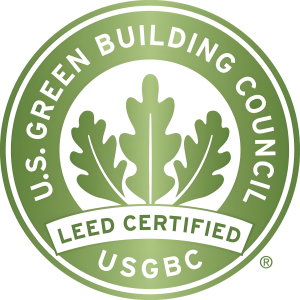The role of LEED for Cities in driving sustainable progress
LEED for Cities is a transformative tool. Local governments are using the rating system to develop and align comprehensive plans like that of Las Vegas, Nevada; benchmark sustainability to track progress in the way of Santa Fe, New Mexico; align with the U.N. SDGs; and much more.
USGBC’s LEED for Cities team regularly writes case studies, develops guides and hosts webinars to demonstrate and provide evidence of the rating system’s effectiveness. Over the past five years, I have worked directly with dozens of cities and counties around the U.S. through annual cohort leadership programs, as a direct liaison, to train local government staff on the ins and outs of project management and data gathering to complete an assessment of their local sustainability conditions. I have worked with sustainability directors, chief resilience officers, analysts, volunteers and interns hailing from jurisdictions as large as 2 million residents or as small as 25,000. Along the way, I have noticed that the communities that are the most successful share three key attributes: empowering leadership, strong relationships and a long-term vision.
Empowering leadership
LEED for Cities certification requires data collection from a variety of sources, led by a strong project manager. When local governments empower their project team from the beginning, the process moves in a seamless fashion. This means leadership (the city manager, mayor, department heads, etc.) inform staff that LEED for Cities is a priority for the community and that the certification supports all stakeholders’ work. For sustainability teams, this creates trust, drives ownership and elevates the role their team plays—not just for the LEED for Cities certification, but for accomplishing all organizational goals.
Relationships matter
By far the most common takeaway we hear from local government sustainability professionals is that the certification process provides the opportunity to forge new relationships and break down silos. The comprehensive nature of LEED for Cities certification requires the project manager to conduct outreach with stakeholders across the city and community.
The most successful project managers go beyond an email and sit down (or join a virtual meeting) with their contacts to discuss the need. These conversations reveal synergies and show colleagues the role that they play in the broader sustainability work. It provides an opportunity to support everyone’s work and create new partnerships. One city that recently certified described the process as a way to open doors for future projects. They viewed the data collection process as an opportunity to make these connections.
Link here: https://www.usgbc.org/articles/role-leed-cities-driving-sustainable-progress



